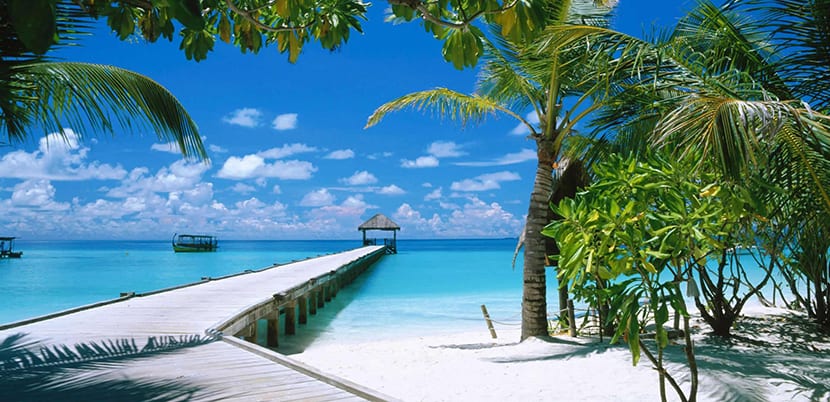
I like to look at the world map and locate lands that perhaps I have heard about but I am not sure exactly where they are. That is, I know where they are but on the map I discover exactly where they are, close to what other nations and I imagine their landscapes, their climates, their culture.
I would like to have money to travel wherever I please, no matter how far or difficult it is to get, although now that I think about it there are no impossible destinations even if you only have a backpack. The important thing is the desire. So today our destiny is New Caledonia, in the Pacific Ocean and not far from Australia.
New Caledonia
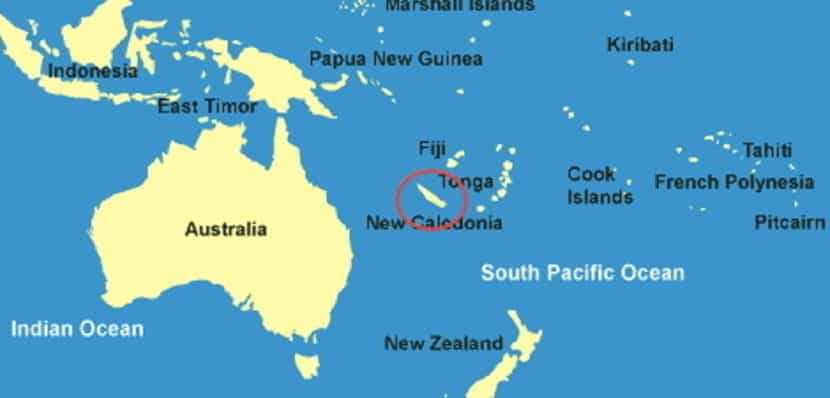
It is an island that is to the southeast of the Pacific Ocean and belongs to France. They spread her around 1200 kilometers from Australia and is part of the archipelago known as melanasia. The island has about 18.500 square kilometers and is inhabited by almost 270 thousand people, including descendants of Europeans, the Kanak people, Polynesian peoples and even Africa and Southeast Asia.
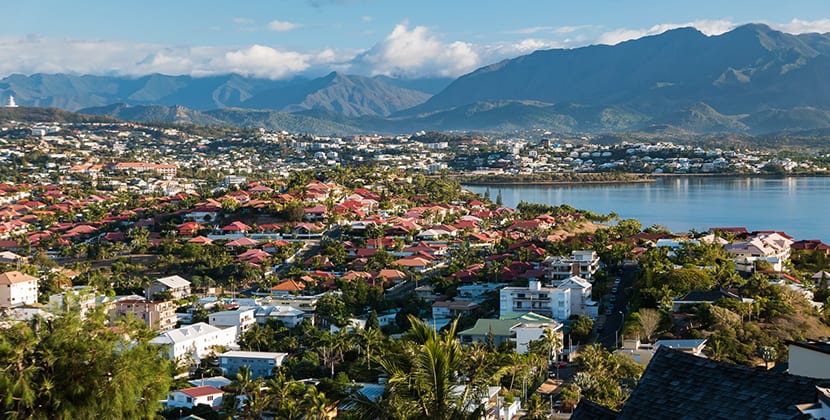
The capital is Noumèa. The island was sighted by James Cook in 1774, an English captain and explorer who also came to Australia and New Zealand on his travels. He named it Caledonia because part of its geography reminded him of Scotland, but the island became the property of France in 1853.
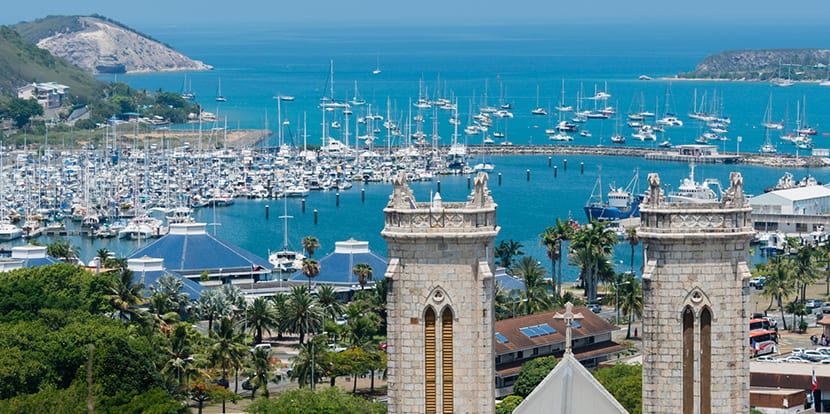
Happened to be penal colony numerous after the riots in Paris at the end of the XNUMXth century. Around the same time, the English and French brought and dwellers from the nearby islands to work on the plantations, and after the discovery of nickel these modern slaves ended up in the mines. The original people, the KanakThey were held in reservations and there were several revolts.
If we add to this the diseases brought from the Old Continent, the Kanak were soon a minority. Already in the XNUMXth century the island became a base for the Americans and after the Second World War it formally became a French overseas territory.
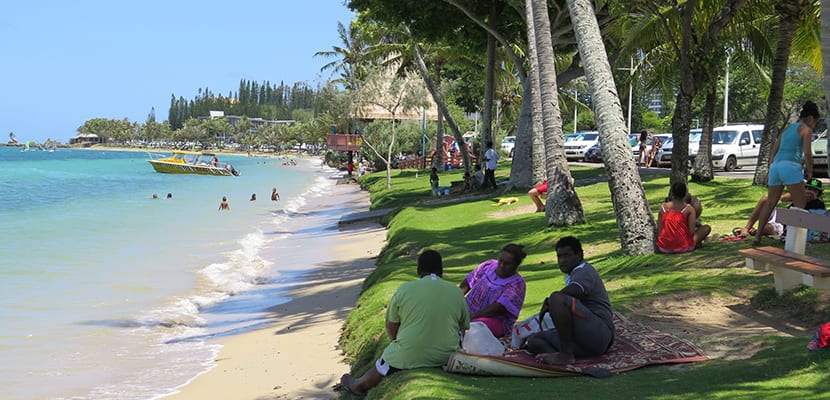
Regarding its landscapes New Caledonia was part of the super continent Gondwana and many believe that it separated from Australia about 66 million years ago. There is a central mountain range with 1600-meter peaks, huge savannas, grasslands, a lot of vegetation and even an arid area and majestic rocks that go into the waters. Variadito.
The climate is tropical with a wet season from November to March, around 30 ° C, and a dry season between June and August with maximums of 23 ° C. Between December and April is cyclone season.
What to visit in New Caledonia
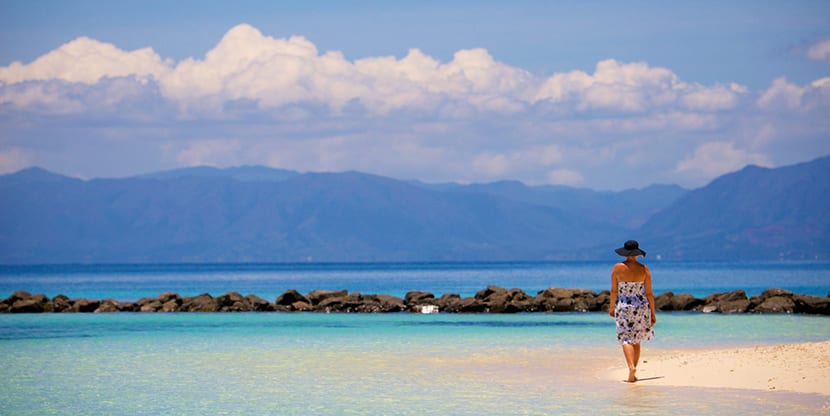
You can divide the island into five regions / destinations: the capital Nouméa, the west coast, the east coast, the south and the islands. Let's start with the capital founded by the French in the XNUMXth century. It is a city that is on the coast and has several bays with great beaches. Look at a lagoon where the first Europeans docked in 1853. There are two islets in sight that can be reached in just minutes, like spending a morning.
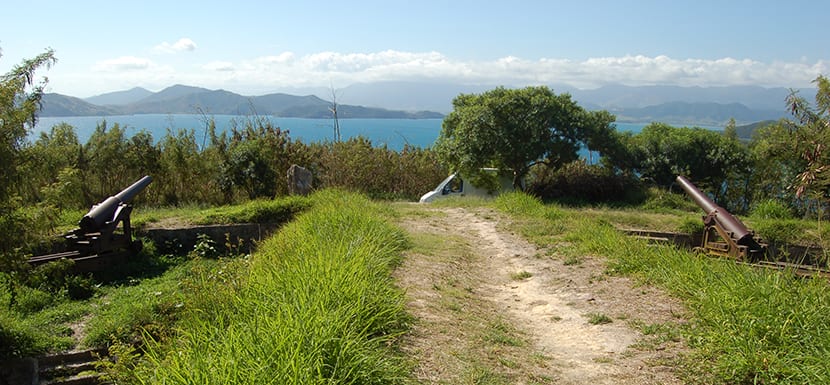
The city is very multicultural and it has museums, galleries, cinemas and a colonial zone with old houses that are worth visiting. There are about 100 inhabitants and you can enjoy its beaches but also its bars, restaurants and shops. It even has two casinos. Do not forget to visit the Aquarium of the Lagoon, the parks, the zoological, the fairs of coconut square and if you like to walk there is the Nouville Road to Fort Tereka.
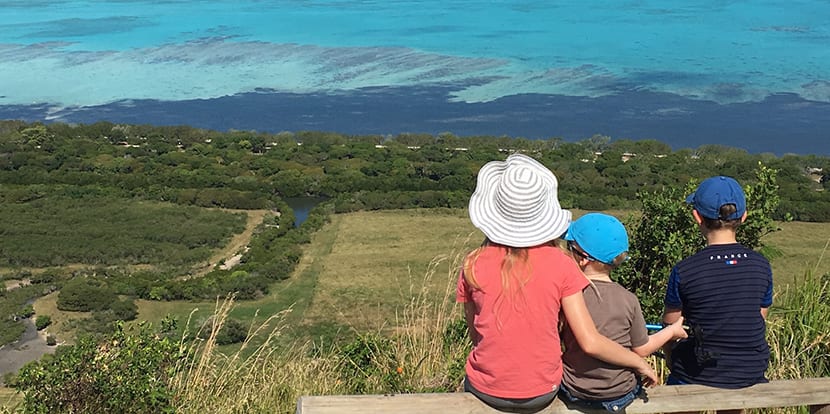
We continue with the West Coast: it has varied landscapes so there are from plantations to areas that look like the moon. Cowboys work in the plantations that will remind you of the American Wild West but when you approach the coasts the landscape becomes tropical, with mangroves and lots of sumptuous vegetation.

Here is a strange natural formation that developed inside the mangrove swamp. It has a heart shape and is in Voh. Since she was photographed by a guy named Yann Arthus-Bertrand in 1990, she became known worldwide: Heart of Voh. To find out more, there is the Eco Museum in the area. There are many localities on the west coast of New Caledonia and thus, there is cultural heritage also in the Montfaoué petroglyphs and in the ancient pottery found in the area, today national treasures.
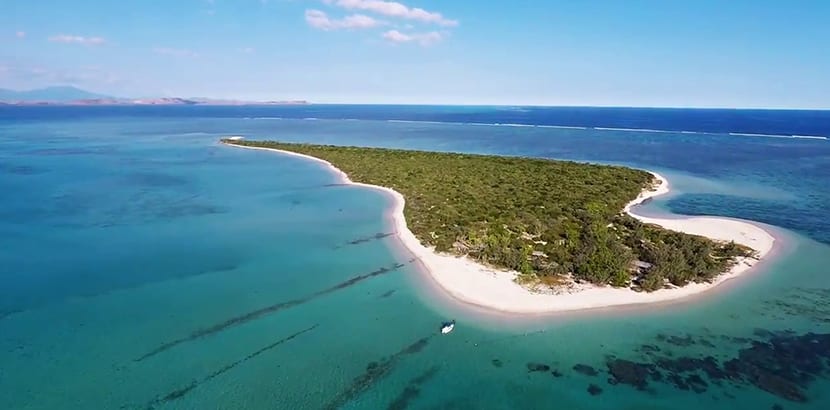
UNESCO has honored the west coast lagoon with the title of World Heritage. It is one of the most beautiful areas of the island because it has a lenticular coral reef that runs from Bourail to Moindou and is studded with some beautiful islands such as the Ténia islet, just an hour's drive from the capital and a 20-minute boat ride from the coast of Boulouparis. it is a place to sunbathe, snorkel, swim and enjoy.
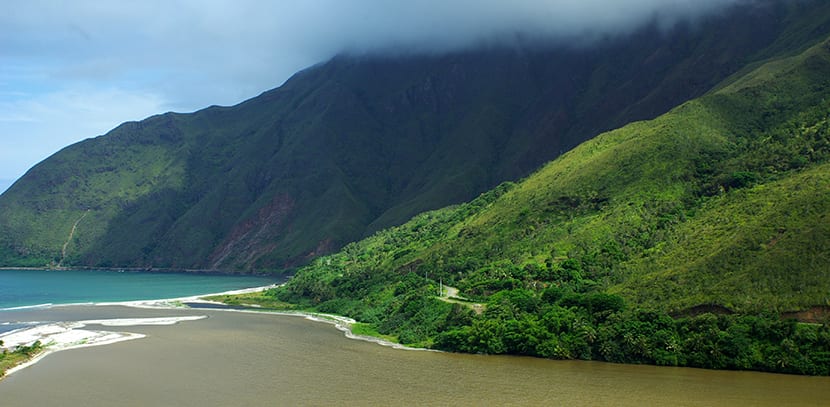
Around here you can also visit the Pilou copper mine that operated between 1884 and 1931 and kayak through the waters of the river Fayard. The central mountain range of the island divides it in two, the western part and the East Coast: this coast is exposed to stronger winds and is more humid so its landscapes are more exuberant. It goes from Pouebo to Ponerihouen, running between the mountains and the sea.
Several towns are on this route and under the water of the sea there is a wonderful flora and fauna, of great wealth: stingrays, seahorses, corals, anemones. There are islets and islands and a lot of wild beauty.
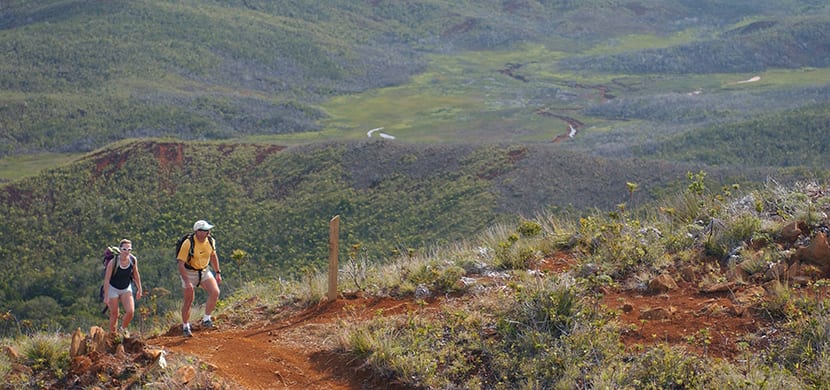
El Great South is a region made up of two municipalities, Mont-Doré and Yaté and is characterized by three different colors: the rainy forests with its greens, the Mar with its blues and its Red land. Here is the largest national park in the country, the Rio Azul Provincial Park, great for walking, kayaking and much more. It also has the Madeleine waterfalls and a very nice botanical trail. The same happens with the N'Dua Reserve from whose vantage points you can see humpback whales reproduce between June and September.
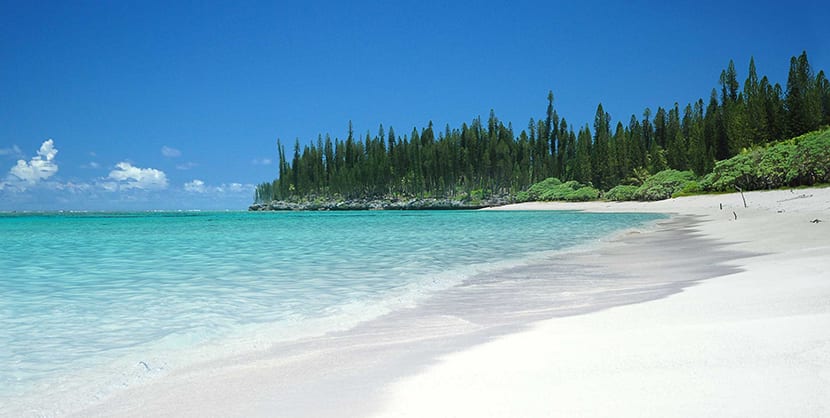
The Great South has everything if nature is your thing, it is like the entire island concentrated in one sector. But we said at the beginning that there are also other islands and islets: in total there are five: Maré, Tiga, Lifou, the Isle of Pines and Ouvéa. Each one has its own profile. Ouvéa has a spectacular 25-kilometer-long white beach with coconut palms and great diving sites.
Lifou also has beaches, high cliffs, forests, and caves. It is very contrasting and your visit is highly recommended. Maré is more rugged and the island of Pinos is another paradisiacal beauty.
Practical information for visiting New Caledonia
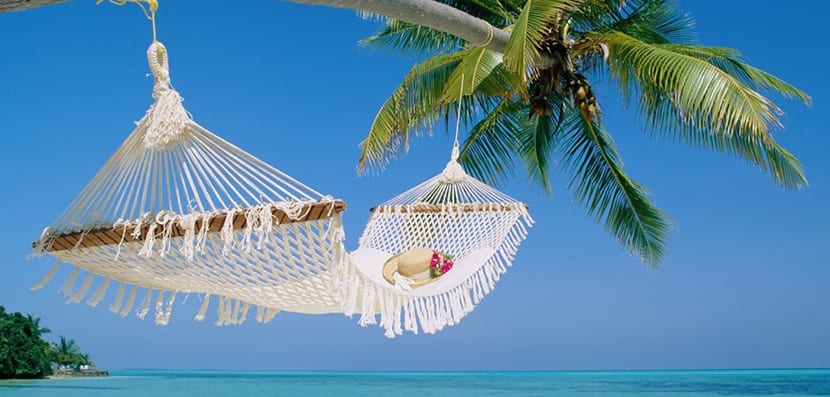
The island has its own currency, the Pacific Franc that is also used in Tahiti, the CFP or XPF. Not part of the Schenghen AgreementAlthough in general you do not need a Visa, you should check if your country is on the list. And if you are not French, you should be able to check where you are going to stay. You do not have to be vaccinated specifically against anything but they recommend having the Hepatyis A and B vaccines.
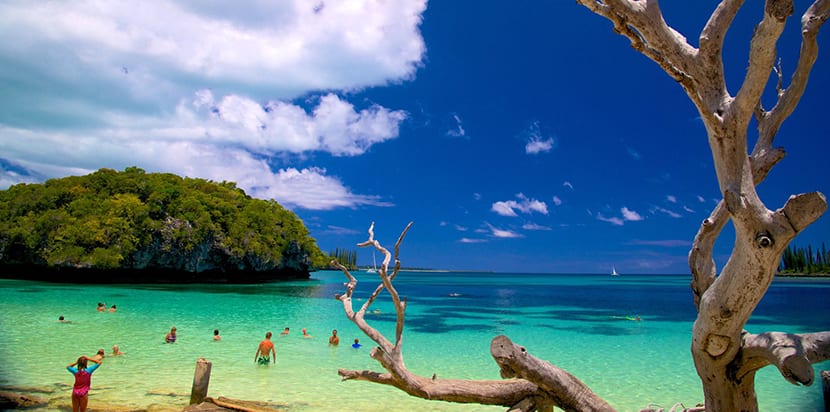
Is there malaria? Not, but there are mosquitoes between November and April, then they disappear, so take repellent and make sure it works in tropical areas since mosquitoes are super powerful around here. They recommend being careful with fresh fish and not much else.
Although the climate is tropical, New Caledonia has its seasons and if you go between October and May it is very hot and between June and September it becomes cooler and windy so it is advisable to bring a coat. Regarding transportation, the capital has an international airport and then the most convenient way to get around is by car, In the Local buses and in the case of moving to other islands in boat or plane. Within the capital, you can walk many times.